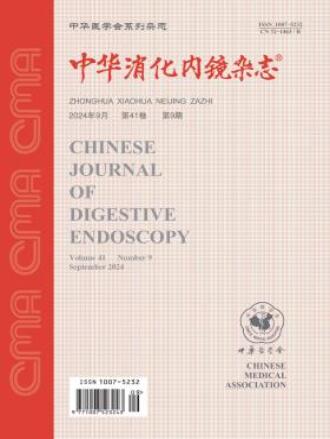Diagnostic value of endoscopic ultrasonography for extra-hepatic bile duct dilation of unknown reasons
引用次数: 0
Abstract
Objective To evaluate diagnostic efficacy of endoscopic ultrasonography (EUS) for extra-hepatic bile duct dilation of unknown reasons which failed to be identified by traditional radiological methods. Methods Data of consecutive 892 patients who underwent EUS from February 2016 to September 2017 were retrospectively studied. Final diagnosis was determined by endoscopic retrograde cholangiopancreatography (ERCP)-based biopsy, surgical pathology, or a follow-up of at least 10 months. Results A total of 82 patients with extra-hepatic bile duct dilation (width ≥ 7 mm) and mean age of 61.5±9.6 years were included. The width of common bile duct was 13.0±4.25 mm. Reasons for extra-hepatic bile duct dilation could be determined by EUS in most patients with abnormal liver function. No malignant causes were detected in patients with normal liver function. The diagnostic sensitivity, specificity, accuracy, positive predictive value and negative predictive value of EUS were 92.7%, 100.0%, 96.3%, 100.0%, and 93.2%, respectively. Conclusion For patients with dilated extra-hepatic bile duct without clear etiology, EUS may be an alternative for determining the etiology of extra-hepatic bile duct dilation. For those with extra-hepatic bile duct dilation with abnormal liver function, malignant causes should not be neglected. Key words: Common bile duct diseases; Cholangiopancreatography, endoscopic retrograde; Endosonography; Diagnostic techniques, digestive system超声内镜对不明原因肝外胆管扩张的诊断价值
目的评价超声内镜(EUS)对传统放射学方法无法识别的不明原因肝外胆管扩张的诊断效果。方法回顾性分析2016年2月至2017年9月连续892例接受EUS的患者的数据。通过基于内镜逆行胰胆管造影(ERCP)的活检、手术病理或至少10个月的随访来确定最终诊断。结果82例肝外胆管扩张(宽度≥7mm)患者,平均年龄61.5±9.6岁。胆总管宽度为13.0±4.25mm。在大多数肝功能异常的患者中,EUS可以确定肝外胆管扩张的原因。在肝功能正常的患者中未发现恶性原因。EUS的诊断敏感性、特异性、准确性、阳性预测值和阴性预测值分别为92.7%、100.0%、96.3%、100.0%和93.2%。结论对于病因不明的肝外胆管扩张患者,EUS可能是确定肝外胆管膨胀病因的一种替代方法。肝外胆管扩张伴肝功能异常者,其恶性原因不容忽视。关键词:常见胆管疾病;胰胆管造影,内镜逆行;腔内超声;诊断技术,消化系统
本文章由计算机程序翻译,如有差异,请以英文原文为准。
求助全文
约1分钟内获得全文
求助全文
来源期刊
CiteScore
0.10
自引率
0.00%
发文量
7555
期刊介绍:
Chinese Journal of Digestive Endoscopy is a high-level medical academic journal specializing in digestive endoscopy, which was renamed Chinese Journal of Digestive Endoscopy in August 1996 from Endoscopy.
Chinese Journal of Digestive Endoscopy mainly reports the leading scientific research results of esophagoscopy, gastroscopy, duodenoscopy, choledochoscopy, laparoscopy, colorectoscopy, small enteroscopy, sigmoidoscopy, etc. and the progress of their equipments and technologies at home and abroad, as well as the clinical diagnosis and treatment experience.
The main columns are: treatises, abstracts of treatises, clinical reports, technical exchanges, special case reports and endoscopic complications.
The target readers are digestive system diseases and digestive endoscopy workers who are engaged in medical treatment, teaching and scientific research.
Chinese Journal of Digestive Endoscopy has been indexed by ISTIC, PKU, CSAD, WPRIM.

 求助内容:
求助内容: 应助结果提醒方式:
应助结果提醒方式:


